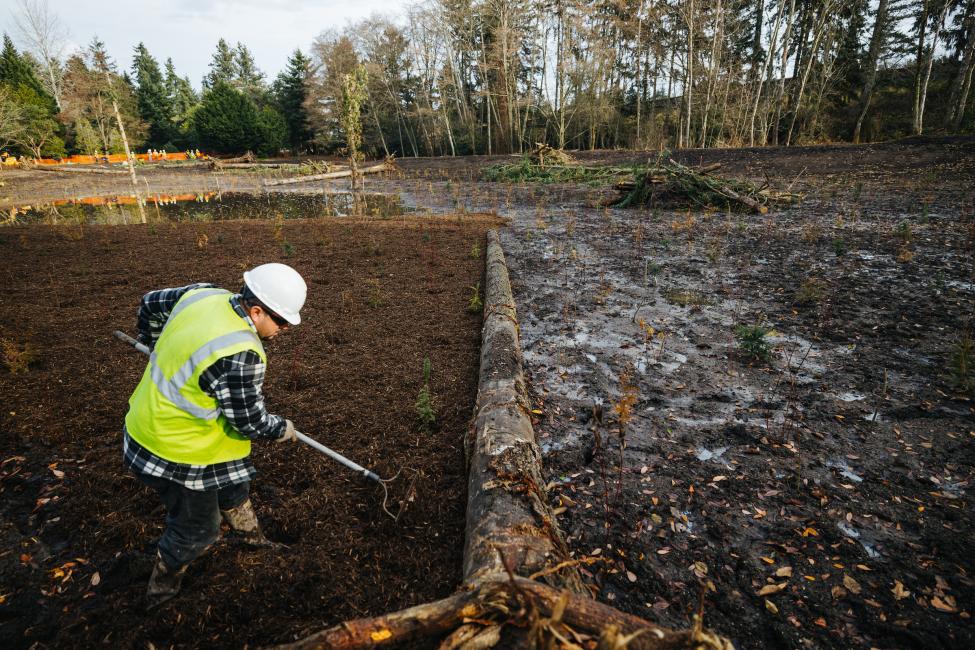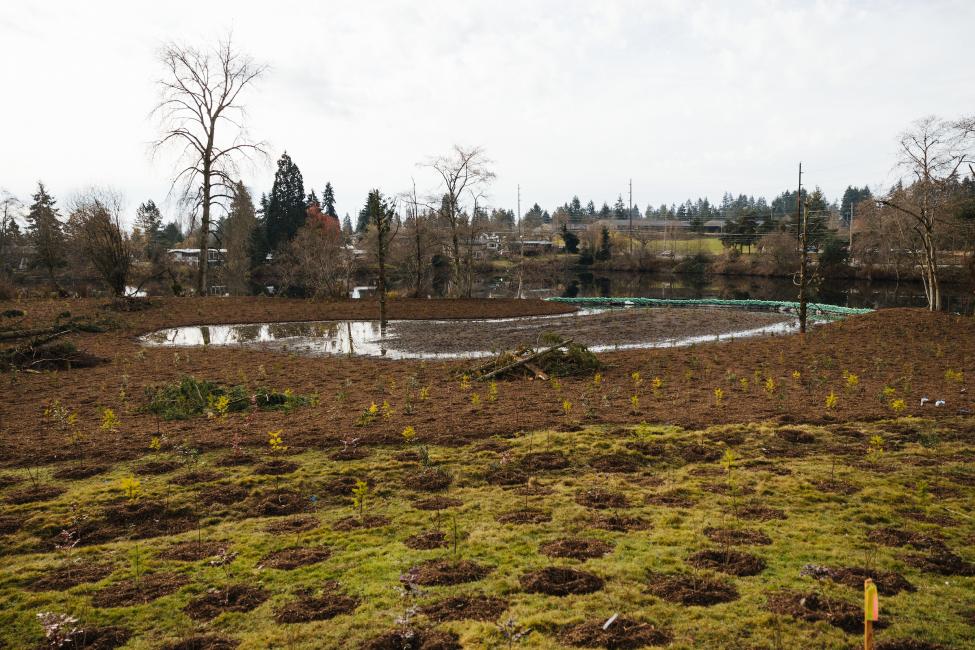It’s been a soggy year so far in Seattle.
We know people think it's gray here all the time, but it really has been cold and drizzling for two months straight, resulting in record-setting rain in January and widespread flooding last week.
With all of the water absorbed in our region, it’s a good time to reflect on the importance of wetlands – and Sound Transit is in the midst of a big wetland restoration project at Ronald Bog Park in Shoreline.
Some wetlands elsewhere in the city will be affected by Link light rail construction, and we're enhancing Ronald Bog Park to make up for those impacts. As part of the project, we're also making it easier to access the shelter, artwork and arboretum in the park.
Light rail will reach Shoreline in 2024 as part of the Lynnwood Link Extension.
There’s a lot of work to be done before then. We're not just building guideway and laying the groundwork for new stations, but helping mitigate the environmental impacts of our construction along the way.
Wetland work
Crews started by removing invasive plant species, along with debris from old construction sites, to enhance and expand the existing wetland at Ronald Bog Park.
They removed several thousand cubic yards of fill material and construction debris, creating an increased flood storage capacity of 10,000 cubic yards (or over 2 million gallons) of water in the floodplain.
Finishing the flood storage excavation this fall helped protect downstream water bodies and property owners this winter during the recent flooding.
History
Not only is Ronald Bog Park a vital resource in our Puget Sound ecosystem – it also has an interesting past.
An ancient, naturally formed peat bog, the land provided cranberries – and other plants of importance to tribal food and medicine – to generations of indigenous peoples long before it became a community staple to non-native settlers.
The park was probably named after Judge James T. Ronald, though historians aren’t sure why, as he never owned the land. The name was first referenced in 1949. A nearby Interurban stop in the neighborhood was also called Ronald.
Unfortunately, mining and Interstate 5 construction severely damaged the wetlands. But when mining ended in 1964, plans to develop the land sparked a grassroots movement to create a park instead.
In 1970, community member Tora Baker led the “the kitchen activists,” a group of seven neighborhood women, to take the bus downtown and speak with the King County Council.
They were ultimately successful, and Ronald Bog Park was officially established in 1974.
Today, it’s a popular park and urban oasis.
Habitat
Bogs are one of the four main types of wetlands classified by the United States Environmental Protection Agency, along with marshes, swamps and fens.
Bogs play an important role as “carbon sinks,” absorbing and holding massive amounts of greenhouse gases – but only when peat is preserved undisturbed in its natural state.
Ronald Bog no longer performs this function. The peat that took thousands of years to form was destroyed by mining, but the park is still a precious resource.
The wetland retains stormwater for the North Branch of Thornton Creek during flood season and serves as a natural filter of pollutants and sediment, protecting downstream water bodies.
It also provides habitat for many wildlife species including osprey, river otter, turtles, Great Blue Heron, beaver, and a variety of waterfowl and other birds.
Other features
Along with enhancing and expanding the wetlands in Ronald Bog, Sound Transit crews are also improving public access to the picnic shelter, public artwork and arboretum.
The “Kiss” sculpture has already been moved to a new location in the park.
Improved public access will help visitors learn about wetlands and the park, with a new ADA-accessible trail and interpretive signs.
We can’t wait to re-open the park this spring when this important environmental project is finished!




